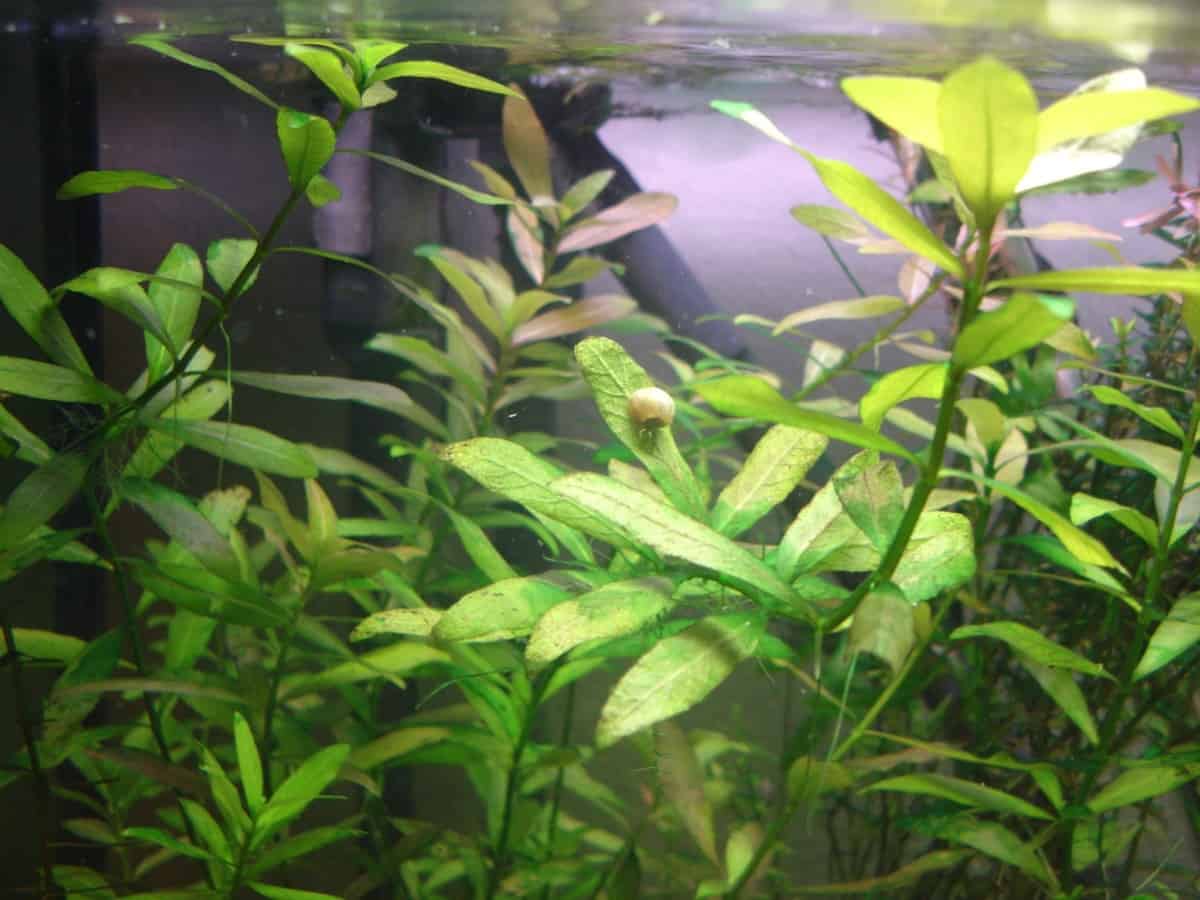When it comes to easy to grow tropical plants, one springs to mind every time and that’s Hygrophila Polysperma. This hardy species from South-East Asia is commonly found in many home aquariums.
This species is so easy to grow that it needs constant trimming so as not to overcrowd your aquarium. This simple process is done by pinching and removing excess stems. You will not harm anything in doing so.
Let’s take a more in-depth look at the aquarium plant: Hygrophilia Polysperma.
Table of Contents
Species Data
The genus Hygrophila (family Acanthaceae) contains approximately 100 species, most of which are terrestrial and occur primarily in the tropics.
The Genus derives its name from the Greek ‘hydro’ meaning ‘moist, wet’ and ‘phil’, meaning ‘loving’.
Hygrophila polysperma was first named Justicia polysperma Roxb. in 1820. It was then later changed to Hemidelphis Polysperma in 1832, and further revised again to its current accepted scientific name, Hygrophila Polysperma T. Anderson in 1867.
| Common Names | Dwarf hygro, Indian waterweed, Dwarf hygrophila |
|---|---|
| Family | Acanthaceae |
| Care Level | Easy |
| Color | Green/Red |
| Max Size | 24 Inch |
| Water Conditions | 5-8 pH and Soft to Moderately Hard Temperature: 64–86 °F (18-30 °C) |
| Light Levels | Low-Moderate |
| Propagation | Division/Splitting |
Origin
Hygrophila Polysperma was originally native to South East Asia and can be found in Bangladesh, India, China, and Malaysia. It is now an established plant in several southern states in the US, including Texas and Florida. This plant is not native to the US and in several states, it is now classed as a non-native invasive species, which makes it illegal to sell or import – so always check your local regulations before buying or selling this plant.
The introduction of this species into non-native rivers has seen a damaging effect on other native species. As you can see from the image below this species can completely take over a river bed within a few short years.
Some of these negative impacts include displacing native plant species, reducing biodiversity, decreasing water quality and flow, clogging irrigation pumps, impeding recreational activities, and diminishing aesthetic value.
The cost of removing and avoiding any future damage to the natural waterways will run into the millions.
However, that said, it does make a very suitable aquarium plant and we for one, really like Dwarf Hygro, which it is often called. Indian swamp weed is another name for Hygrophila Polysperma.
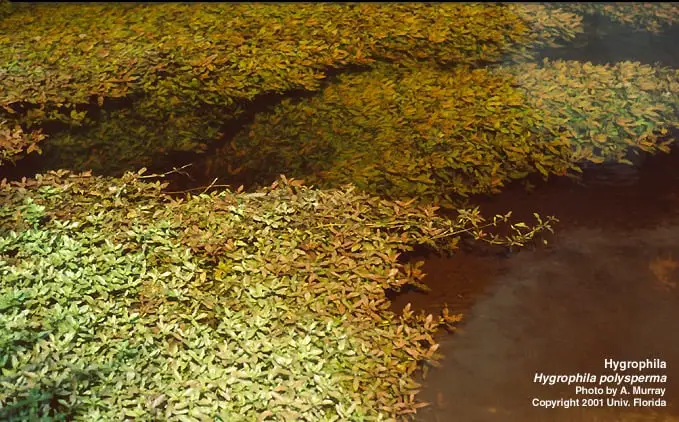
Care And Water Conditions For Hygrophila Polysperma
Hygrophila Polysperma or Dwarf Hygro, as it’s more commonly known, needs very little extra care other than suitable water conditions and aquarium lighting.
CO2 is not required for this plant to successfully grow. In fact, CO2 could be far too much for this species which will result in excessive growth. This will require constant trimming.
Adding plant food or aquarium plant fertilizer will help establish a strong root system but as mentioned before it’s not essential for its success. This plant is capable of substantial growth with good water conditions and adequate lighting.
If you would like to feed the other plants in the aquarium we suggest these Flourish Tabs which are available on Amazon
Growth Rate
Capable of growing over 60 cm in length, it is even capable of forming new plants from leaves floating on the surface of the aquarium. This aquarium plant, which is perfect for beginners, is fast-growing and requires minimal care or extra special attention in the form of lighting, C02, and feeding.
Lighting
Light is vital for growth in all living species of plants – including aquarium plants. Choosing the right color of light will ensure you keep and grow healthy aquarium plants and keep algae to a minimum. Your plants need the correct wattage of light for the right amount of time to grow and this may require more lighting than what came with your fish tank.
The average home aquarium, when purchased with a fitted hood, will come with low-level lighting. Low-level lighting is light that is less than 1.5 watts per gallon of fluorescent grow light. This is fine for aquariums with no live plants, just fish.
However, for successful plant growth, we recommend increasing this to at least 2 Watts per gallon.
You’ll also need to keep your aquarium lights on for a constant amount of time. 8-12 hours a day is an average but this can vary depending on the fish and plant species kept.
Read our complete guide on suitable LED Lighting Systems and also our article on timings and the number of hours recommended per day to give your plants the best possible lighting.
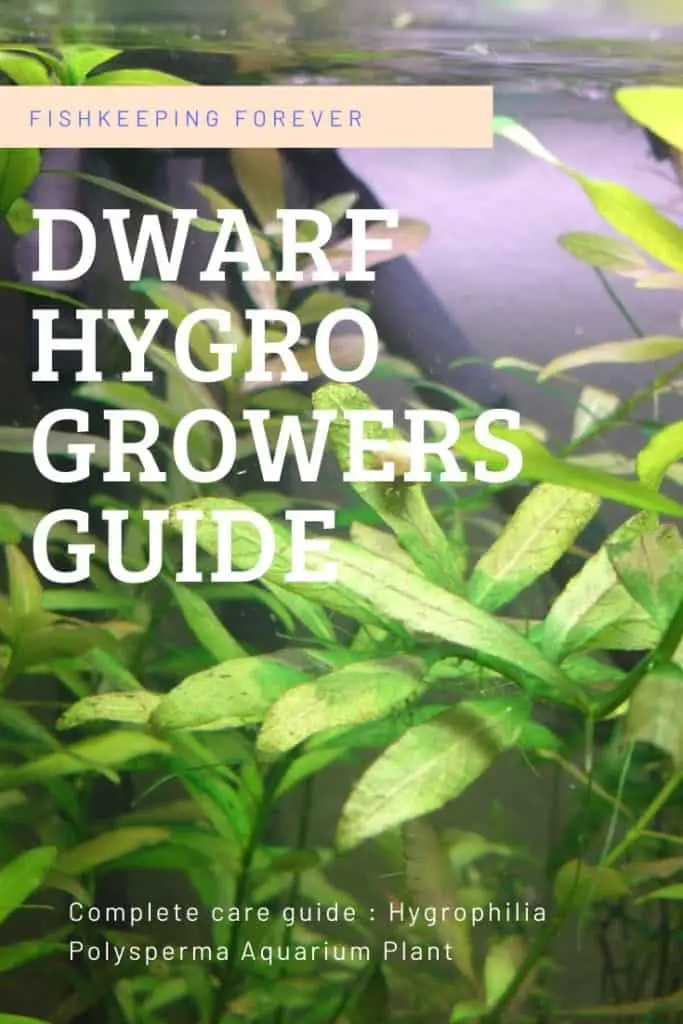
Propagation
Propagation of an aquarium plant species has never been easier than with this plant. You can even propagate this plant from a single leaf planted directly into the substrate.
However, the easiest method is to pinch part of the stem from the main plant using your finger and thumb.
Allow plenty of space for the plant to grow. Push the detached stem into the substrate enough so that the plant holds firmly in the substrate.
That’s it! It’s as simple as that.
The other method is to allow the plant to reach the surface of the aquarium. Then cut off the excess growth shoots with a pair of scissors and re-plant into the substrate as above.
You’ll have no issues with propagating this aquarium plant in most home aquariums.
Placement
Dwarf Hygro, unlike its common name, can actually reach 60cm in length. We, therefore, suggest placing it in a background-position or mid-level at the start until the plant has taken root and starts to grow.
If constantly trimmed a mid-level position within the aquarium will make for a beautiful looking plant species. You then have the option to let it grow and become a background plant by simply removing it from the mid-level and re-planting it into the background.
You will cause no harm to the plant by doing so and you’ll then have the flexibility to create an amazing underwater garden.
Color and Leaf shape
Hygrophila polysperma varies considerably in leaf shape and color, depending to some extent on the light supplied.
The two main types of Hygrophila Polysperma available in most aquarium stores or online are either the ‘Broad-leaf’ or ‘Narrow-leaf’ species. Both can vary in color from very light green to almost a light brown color – depending on the lighting provided.
The tips are often a lovely shade of red which is only available from viewing this plant from above. It is often used in open-top aquariums for this reason.
Take a look at our TOP 10 AQUARIUM PLANTS LIST to see if Dwarf Hygro appears on this list.
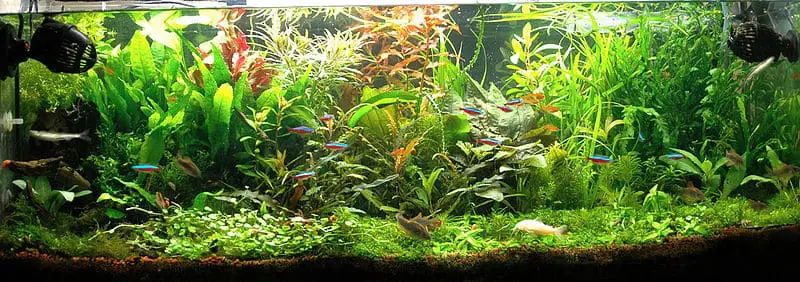
Can Dwarf Hygro Help Reduce Algae?
Yes, Hygrophila Polysperma will help with any algae issues you’re having along with any excess nutrient problems. Due to the fast rate of growth you get with this species, all the excess nutrients which are present in the aquarium are eaten up by this plant, meaning that there is nothing left for the algae to survive on.
This will see a rapid reduction in algae growth within your tank. Replaced by a full and lush growth of Hygro Polysperma. Which would you rather have?
Dwarf Hygro F.A.Q
- Can Hygrophila Polysperma be used in a pond? Yes, depending on the water temperature. If your pond is between 15c to 30c then it will be suitable
- Is Hygrophila Polysperma suitable for all types of freshwater aquariums? You can grow this species of plant in most community aquariums. Some fish will nip and eat this plant, however, the fast rate of growth usually means there is no harm to the plant longterm
- How big does it grow? Up to 60cm in length but this plant will branch out and spread across the aquarium floor
- Can it grow on the surface? Once the shoots reach the surface they do not stop growing. It will continue to produce new shoots and float happily on the surface of the aquarium. If left unattended it can block out the light for smaller species on the bottom of the aquarium
- Can you buy and sell Hygrophila Polysperma in the USA? Hygrophila polysperma is listed as a Federal Noxious Weed, so it is illegal to import, sell, or purchase this species in the United States
- Should you feed Hygro Polysperma? It is not essential to feed this species of plant. It will extract all the nutrients it needs from the substrate and water and will thrive without the need for plant food
Conclusion: Complete Care & Growers Guide – Dwarf Hygro
Don’t let the thought of excessive growth and invasive plant species put you off from keeping the Hygrophila polysperma in your aquarium.
If you’re looking for an easy to grow beautiful aquarium plant then Dwarf Hygro, Indian Weed or if you like it’s full scientific name… Hygrophila Polysperma is the plant for you.
It features in our 21 Aquatic Plant list for beginners. Take a look at some of the others that featured highly on our list.
- Best Aquarium Plant Substrate Review 2022
- 18 Benefits of Marimo Balls ( How many per Gallon? )
- 11 Best Plants for Betta fish
- Top 7 Best plants for baby fish
- 9 Best Plants for Guppies ( Freshwater Aquarium Plants )
Data Sources Used
https://nas.er.usgs.gov/queries/greatlakes/FactSheet.aspx?SpeciesID=13&Potential=Y&Type=2&HUCNumber=
https://en.wikipedia.org/wiki/Hygrophila_polysperma
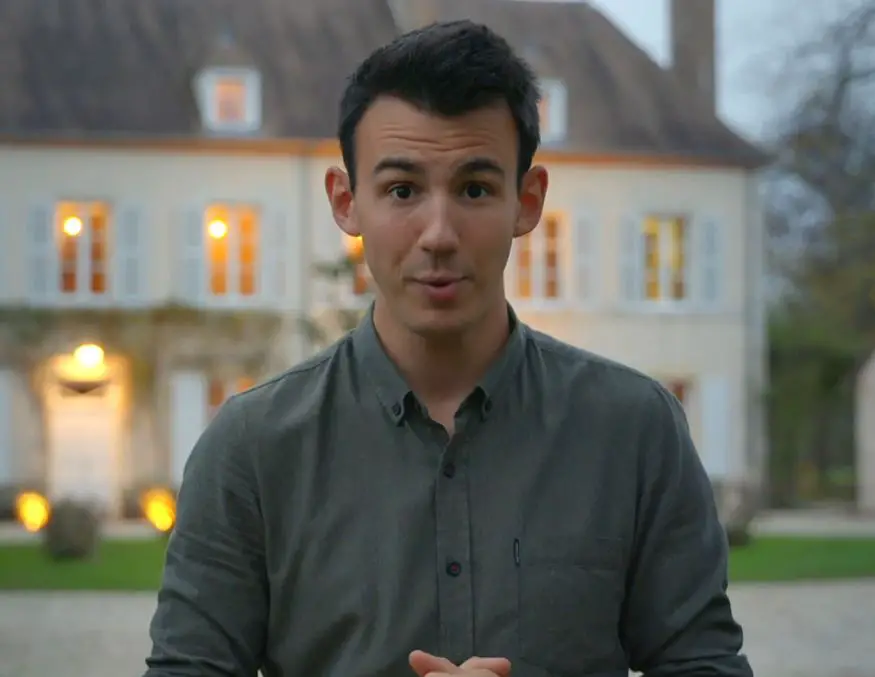
I have been working in the tropical fish industry for over 30 years now and I’m still learning. Everyday is a school day in this hobby. In my spare time I play golf very badly!


